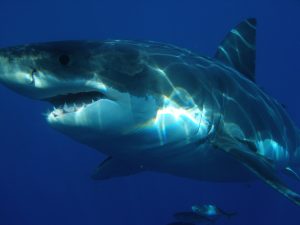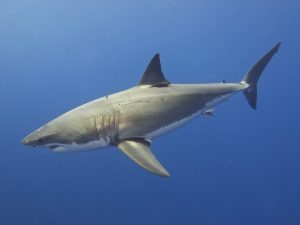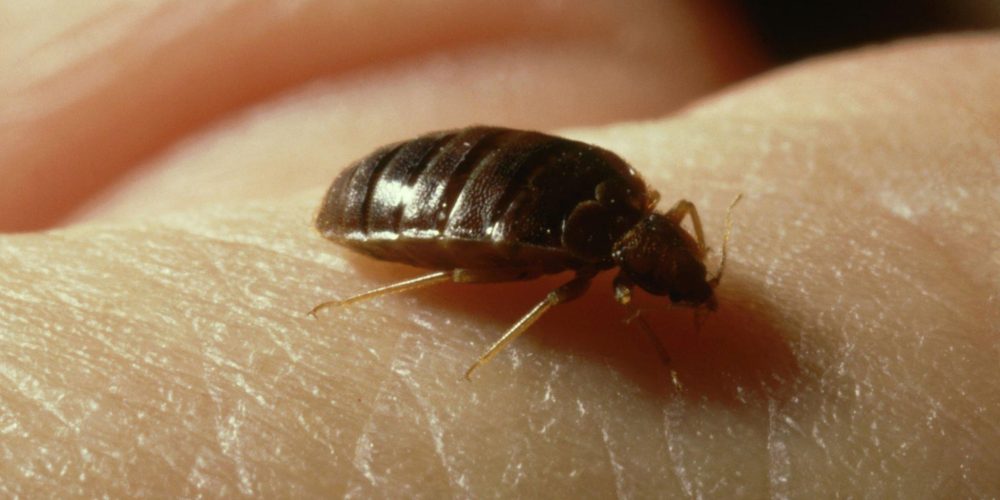The oceans on earth remain a place filled with mysteries and wonders which we are yet to unravel and may never unravel fully for decades to come. This shouldn’t come as a surprise since oceans occupy about 70% of our planet’s surface. In fact, scientists, marine biologists, and oceanographers believe that our exploration and ocean mapping is barely up to 5% of what’s left to be discovered.
One of such creatures that reside in these bodies of water is the great white shark, of which much is left to be known. Sharks are probably the most popular celebrity of the oceans. There are over 400 species of sharks worldwide, but the great white shark seems to be the most popular of them all. They are easily identified by their slate-grey backs and their white underbellies, from which they got the nickname “great white.”
Have you ever wondered why these torpedo-shaped sharks are called “great”? The answer lies in their size, weight, and predatory prowess, which is why they are often referred to as the ‘largest predatory fish’ on earth. Please take note of the term “predatory” because the largest fish in the world is also a shark but a different species of shark called the whale shark. The whale shark is much bigger, larger, and longer than the great white, but it isn’t predatory as it feeds mostly on planktons.
Size and natural habitat
Our focus, the great white, grows to an average size of 15 feet (4.5 meters) in length. The females are often bigger, measuring between 15 and 17 feet (4.5–5 meters), while the males are often between 11 to 13 feet (3.5–4 meters) long and weigh thousands of pounds. The largest great white shark that has ever been discovered measured approximately 23 feet (7 meters) in length. With such size, weight, bite force, and hunting prowess, they are worthy of the adjective “great” as they are the top hunting machines of the oceans.
Great white sharks have a diverse habitat but are predominantly found in Australia, Southern Africa, United States (especially California), and New Zealand. However, a few of them are also found in certain coastal areas of places likes Hawaii, Chile, Oceania, Japan, Sri Lanka, Madagascar, the Caribbean, and the Philippines. Their meal includes a huge variety of fishes and sea mammals. Small sharks, when born, usually feed on fishes, turtles, crustaceans, other sharks, chelonians, mollusks, sea birds, etc.
When they grow bigger and stronger, it includes sea lions, dolphins, small whales, otters, porpoises, carrion, and one mammal they so love — seals. Seals are one of their top favorites because of the immense supply of fat that seals provide. Great whites prefer to swallow their food rather than chew it using their 300 serrated, triangular-shaped teeth for biting off large chunks of meat off their prey.
Does the Great White Shark have any natural predators?
Do great whites have any natural predators? According to National Geographic, based on new research and discoveries by some marine biologists, they discovered that certain orcas (killer whales) seem to be hunting and feeding on the great white’s liver due to its high fatty nutrient. In fact, the research points out that orcas seem to be working together to take down great whites.
Apart from orcas, their other principal natural predator remains humans who deliberately hunt them as fishing trophies, high-priced teeth, or meat. They also sometimes get entangled mistakenly in fishing nets which could inflict injuries that would leave them incapacitated and unable to hunt for life.
Are great white sharks an endangered species? Well, no one can really give fairly accurate statistics of the great white shark population. But, according to the International Union for the Conservation of Nature (IUCN), great whites are a ‘vulnerable’ species which is just one step away from becoming ‘endangered.’ Apart from being deliberately hunted, their population is consistently decreasing due to the adverse effects of human activities such as overfishing and seal hunting which often leaves very little prey for these sharks with large appetites.
So, if things worsen, they are certainly going to become endangered species and not just vulnerable species. Even the media is not helping matters as there are often campaigns calling for the hunting of great white sharks, especially when there are biting incidents. It would certainly be a great loss to lose these phenomenal species, which are the largest predatory fishes residing in our oceans.
Are Great White Sharks dangerous to humans?
Are there direct encounters between humans and great whites? Would a great white shark eat humans? Would they even attempt to attack a human being? What motivates them to attack people, and are their bites fatal? These questions are the top concerns of beach lovers, surfers, sea-going people, and marine biologists. Different from popular opinions that great whites are relentless, mindless, hunting predators, they are like us in that they are a species with an infinite amount of curiosity.
When they spy on something that catches their fancy, they simply go to check it out without fear or hesitation. Why should they fear when they are basically on top of the food chain? This is one dominant reason for shark and human encounters. There are encounters between great whites and marine biologists who sometimes employ and stay in protective cages from which they can conduct their research. There are also accidental encounters between great whites and humans. This includes surfers, seafarers, swimmers, divers, fishermen, and even boats. These encounters account for most great white shark attacks on humans.
There are several reports and documented incidents of great white shark attacks. The majority are not fatal, but some, quite fatal. Regional studies of shark attacks have indicated huge differences in the fatality percentage of shark attacks worldwide. According to Britannica, shark attack fatality in the U.S was 7%, South Africa – at least 20%, and in Australia — about 60%. Whether these attacks were provoked, deliberate, or accidental, there has been no tangible evidence suggesting that great whites do eat people.
However, that doesn’t mean you should go up close to one. Researchers are of the view that most attacks stem from the shark’s curiosity and, sometimes, the mistaken identity of looking like one of their favorite fatty meals — seals. This is why most reported shark attack incidents seem to support the view that surfers have a greater risk of being attacked than others. This is somewhat explainable.
Surfers sometimes lie down on a torpedo-shaped surfboard and paddle the water at their sides with their arms. This is exactly how a seal looks like to sharks which often attack from beneath the prey using stealth and speed. One of the most recent attacks was a heroic one to have taken place in New South Wales, Australia. A woman was thrown off her surfboard and grabbed at her right calf by a great white while trying to climb back on her surfboard. The husband, who wasn’t far away, held on to the board and repeatedly punched the shark until it let her go.
Conclusion
With the media attention that shark attacks get, one would think that they are responsible for hundreds of deaths yearly. However, the International Shark Attack File says there were only 64 combined shark attacks in 2019, with the U.S. coming first and seconded by Australia. According to shark attack data, Australia has the highest fatality rate. So, if you live in or plan on going on vacations to any of these countries, be careful at their beaches.
While there is no concrete evidence to support the popular notion of great whites being man-eaters, they are known to sometimes leave a fatal injury from the “sample bite” they often cut off their victim’s body. If you must surf, swim or sea dive, be careful to avoid regions with known sightings of sharks. Being elusive creatures with many facts yet to be known about them, you never can tell how they may react, particularly if you are on a surfboard.
















